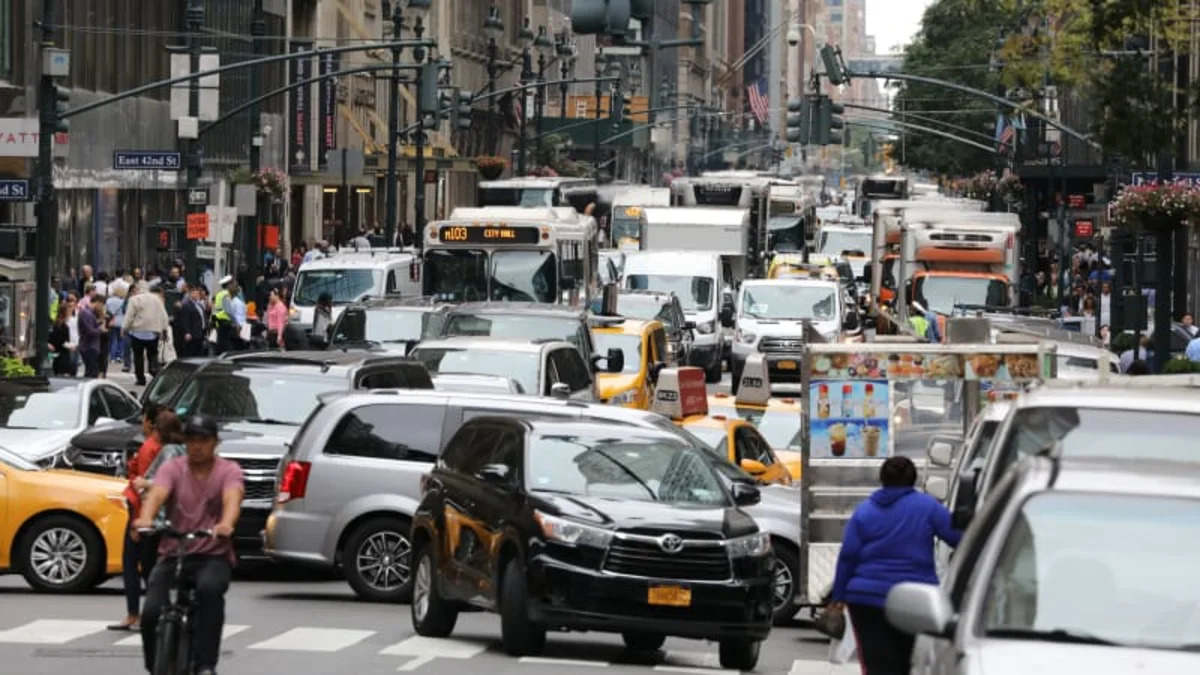Some numbers for context: New York City contains 8.5 million residents, the metropolitan area counts 23.7 million, and 60 million tourists visited NYC last year; NYC suffers the second-worst traffic congestion in the United States, the third-worst in the world; the average speed of Midtown NYC traffic is 4.7 miles per hour; the congestion costs the local economy $20 billion per year. Add to those numbers the crummy state of NYC public transport, and it's clear why Gov. Andrew Cuomo's plan for a congestion charge in parts of Manhattan might have a chance of passing.
We're still missing numerous details from a report prepared by the "Fix NYC" task force, such as how prices might fluctuate throughout the day. We do know, though, that to drive in Manhattan south of 60th Street cars would pay $11.52, trucks would pay $25.34, taxi and Ubers would pay between $2 and $5 per ride, and residents inside the congestion zone would also pay for driving inside the zone. The only way to avoid the charge inside the zone would be to enter Manhattan on either the Edward I. Koch Queensboro Bridge or the Brooklyn Bridge, and stay on FDR Drive until exiting the zone.
According to the Fix NYC report, taxis and ridesharing vehicles could be first to face the charge as soon as next year, with cars and trucks following in 2020. However, the report suggests that NYC fix the public transport system before commencing the fee; things got so bad underground that last year Governor Cuomo declared the subway in a state of emergency.
If the state legislature approves of the charge — after four decades of considering and vetoing such plans — NYC would join other world capitals like London, Milan, Singapore, and Stockholm that assess congestion fees. Money from the toll would provide stable revenue, as much as $1.5 billion per year, for the Metropolitan Transit Authority to upgrade and maintain public transport infrastructure, and ideally ease traffic.
Related Video:
We're still missing numerous details from a report prepared by the "Fix NYC" task force, such as how prices might fluctuate throughout the day. We do know, though, that to drive in Manhattan south of 60th Street cars would pay $11.52, trucks would pay $25.34, taxi and Ubers would pay between $2 and $5 per ride, and residents inside the congestion zone would also pay for driving inside the zone. The only way to avoid the charge inside the zone would be to enter Manhattan on either the Edward I. Koch Queensboro Bridge or the Brooklyn Bridge, and stay on FDR Drive until exiting the zone.
According to the Fix NYC report, taxis and ridesharing vehicles could be first to face the charge as soon as next year, with cars and trucks following in 2020. However, the report suggests that NYC fix the public transport system before commencing the fee; things got so bad underground that last year Governor Cuomo declared the subway in a state of emergency.
If the state legislature approves of the charge — after four decades of considering and vetoing such plans — NYC would join other world capitals like London, Milan, Singapore, and Stockholm that assess congestion fees. Money from the toll would provide stable revenue, as much as $1.5 billion per year, for the Metropolitan Transit Authority to upgrade and maintain public transport infrastructure, and ideally ease traffic.
Related Video:


Sign in to post
Please sign in to leave a comment.
Continue